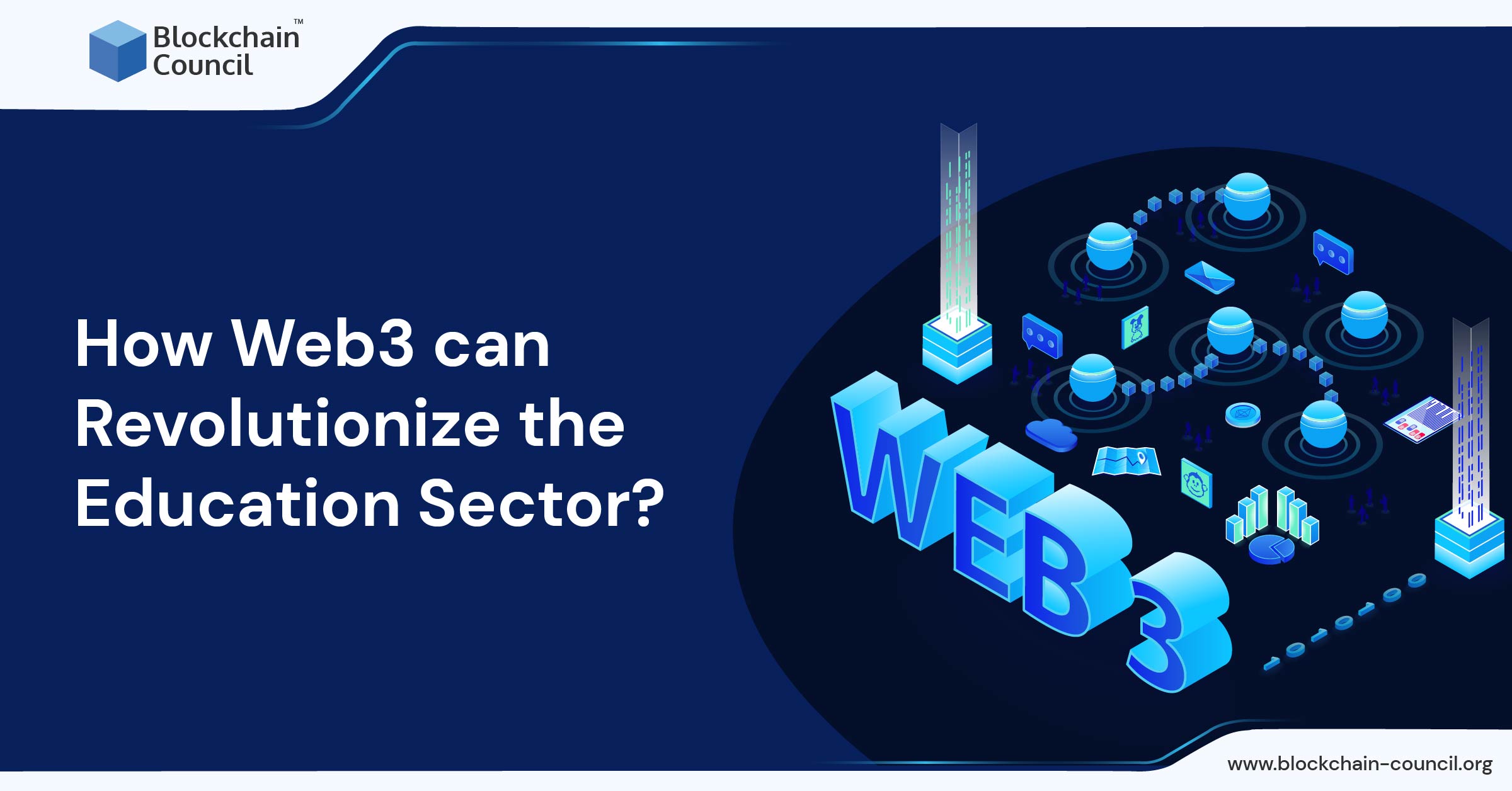
- Pradeep Aswal
- January 07, 2024
Summary
- Web3 education is becoming a significant trend, driven by technological advances and changes in society’s focus on development and innovation.
- Technology has played a crucial role in global development, supporting finance, industry, and business growth.
- The education sector has gained attention from tech experts as a vital pillar for societal development.
- Traditional education has evolved into online learning, offering interactive, innovative, and immersive experiences.
- Web 3.0 technology, based on Blockchain, is poised to revolutionize education by offering decentralized, user-centric solutions.
- It aims to shift from teacher-centric pedagogical techniques to empower students through goal-oriented, experience-focused learning.
- Web 3.0 encompasses various technologies, including Blockchain, AI, cloud computing, Metaverse, 5G, and cryptocurrencies.
- In Web 3.0, information will reach users proactively, and decentralized clusters validate data, eliminating the need for central authorities.
- The education sector has struggled with issues like limited access, high costs, and inefficient skill development.
- Web 3.0 promises to enhance education by providing time-saving, decentralized, and personalized learning experiences, promoting user data ownership, and offering new earning opportunities.
Web3 education sounded like a faux pas even a few years earlier. But not anymore. When humans started evolving into more civilized creatures, they formed a society that talked about development, growth, and innovation. Putting the basic urge to dig something new into play, we as a community, ushered towards technological resources that helped us revolutionize. As technology started deepening its roots, changes began settling in, pushing us to create some out-of-the-box things. If we turn the pages of history today we can see how far we have come from the day when fire was accidentally discovered by us. Our society evolved each day and we found ourselves getting engrossed in the daily hustle of life. The urge to earn money and gain status helped humans to come out of their shells and toil for the things they craved for.
Technology became the ‘push’ that encouraged this development process. It was and is one of the strongest catalysts that paved the way for the global expansion of finance, industry, and business. Technological innovation supported globalization, liberalization, and the industrial revolution. As we started focusing our efforts on technology development, we managed to create things that were once considered a far-fetched dream. The expanse of technology spread across multiple verticals only to change them into something that smells of development and innovation. Amid this revolution, the education sector settled at one of the top spots and garnered priority attention from tech experts.
It won’t be an exaggeration to say that education is one of the most important pillars that supported the change in our society. Without education, development is not possible. We need learned men to run the system. Where earlier education was limited to the classroom, through interactions between a teacher and students, today it has gone global. Students do not have to rely completely on their school teachers for learning as online teaching has opened doors for a liberalized learning experience for them. They can now gain knowledge on anything and everything from the comfort of their homes using technology. Technology has helped to offer an interactive, innovative, and immersive learning experience for learners.
Read More- Understanding The Interrelationship Between Web3 And Blockchain
With Web 3.0 technology entering as the ‘future of the Internet,’ we are likely to witness a revolution in the education world. We all are aware of how the COVID-19 crisis pushed us behind the doors and cut our chords from society. Studying in the traditional school setup was not an option as social distancing became the new norm. This made us shift from in-person teaching-learning to online teaching-learning mechanisms. New-age technologies like Web3 talk about this shift and encourage a new teaching-learning experience for all. Web 3.0 hints toward a decentralized Internet that runs on Blockchain technology. The concept has garnered widescale attention in the past few years with firms like Microsoft and Meta investing in bulk to gain the upper hand in the sector.
Presently, the education system revolves around traditional pedagogical techniques where a major portion of the process is teacher-centric. However, Web3 development strives to bring a shift from this approach to enhance the output. The technology has immense potential to empower the education industry. It strives to open doors for student-friendly, experience-focused learning, and goal-oriented teaching.
A bit about Web 3.0
It is next to impossible for someone to not have heard about Web 3.0 technology in some way or the other. Well, you might not be tech-savvy but being completely aloof to the concept is bound to bring you into a tough spot. Surprisingly, Web3 has been around for several years now but it managed to come into the limelight only recently when we got stuck in urgency to go digital. Often referred to as the ‘semantic web,’ ‘spatial web,’ or ‘the 3D web of the future,’ Web 3 talks about a user-centric Internet version. It hints toward a technology that changes the way we create, interact, and exchange digital content.
Web 3 is a decentralized Internet that runs on Blockchain technology to offer high-end security, transparency, and immutability. There is no single definition of Web3 as it is still in its nascent stage of development. However, experts define it as the next-generation Internet which comprises a plethora of concepts such as Blockchain, cloud computing, AI, Metaverse technology, spatial technology, 5G, cryptocurrencies, etc. When we use Web3 technology as a resource, we expose ourselves to digital tools and decentralized clusters. The network of computers connected in a Web 3.0 ecosystem work as validators who verify the data without relying on a central authority such as banks or government regulators. A web3 expert designs projects that serve user requirements to the best of their capacity.
Within the semantic web cluster, information will reach out to the users rather than the latter searching for it. The decentralized interface analyzes user activities and interests to decide how data finds the users. It also determines the format users want their data to appear in and help to display it within their chosen channel.
Read More- Understanding Humanode While Getting Started With Blockchain Development
The Web Evolution
Web3 is the third phase of the Internet revolution. The first two earlier versions of the web were:
-
Web 1.0
The first step in web evolution was Web 1.0 which was a ‘read-only’ infrastructure. It was introduced in the 1900s and was the first version of the Internet we see today. The cluster was designed to provide access to information and data for the users. The scope was limited. Though, it helped to expand the dependence of users on the web culture.
It boasted several distinct characteristics. Websites of this era were static, akin to digital posters, where content rarely changed. The underlying technology primarily relied on basic HTML. This resulted in straightforward, text-based designs with minimal visual appeal. Interaction was constrained, as users could merely consume information rather than actively participate.
The web landscape was dominated by a handful of content creators, with the majority of users assuming passive roles, akin to readers in a digital library. These hallmark features of Web 1.0 set the stage for the subsequent transformative phases of the internet.
-
Web 2.0
As technology evolved, so did the Internet. The next version came in the form of Web 2.0 which was a level advanced from its predecessor. It supported a ‘read-and-write’ infrastructure. One of the most significant features of Web 2.0 was its ability to support free interaction between users. The technology introduced social media services and allowed people to interact, share, and connect freely. Web 2.0 also encouraged collaborative learning. Web 2.0 is the version of Web we are using now.
Web 2.0 marks a significant shift in the digital landscape. It was characterized by dynamic content that tailors itself to individual users through technologies like JavaScript, AJAX, and PHP. One of its hallmark traits is the encouragement of robust user interaction. It fosters active participation through commenting, voting, and seamless integration with social media. Web 2.0 thrives on user-generated content, empowering individuals to create their own blogs, wikis, and videos, leading to an explosion of diverse content on the web.
The infusion of rich media, including images, videos, and audio, enhances the web’s immersive nature. These websites often operate as web applications, accessible in browsers, and use APIs to enable communication and data exchange between various platforms. Social networking, collaboration, and syndication via technologies like RSS and Atom are integral to the Web 2.0 experience. This creates a more interconnected and interactive online ecosystem.
-
Web 3.0
The decentralized web or Web3 is the third phase of the Internet revolution. With Blockchain technology, virtual spaces, and digital assets, Web 3.0 is what the future craves. It supports an environment where people can ‘read, write, and own’ their content. The system talks about ownership rights for creators who were earlier barred from taking control over their creations. Web3 supports censorship resistance.
In the earlier versions of the Internet, the power to control what goes in and through the web was vested in the hands of a few big business entities. This created monopoly which is not healthy for a liberal society. Web3 adopts a decentralized ecosystem where everyone gets a fair chance to grow and earn. It eliminates third-party involvement and rests the power with the network nodes who verify the data. The use of Blockchain technology makes the system tamper-proof and thus helps Web3 to store bulk amounts of data securely.
Web 3.0 represents a transformative leap, introducing several groundbreaking features. Decentralization lies at its core, leveraging technologies like Blockchain. Unlike Web 1.0 and 2.0, data in Web 3.0 isn’t confined to a single server, enhancing resilience against censorship and manipulation.
Moreover, Web 3.0 embraces the concept of the Semantic Web, employing technologies to make data more machine-readable and intelligent. This semantic understanding paves the way for highly personalized experiences, thanks to the integration of Artificial Intelligence (AI) and Machine Learning (ML). AI algorithms curate content tailored to users’ interests, breaking language barriers through translation services.
Web 3.0 expands its reach through connectivity and ubiquity. Accessible across a plethora of devices, it seamlessly integrates with the real world via the Internet of Things (IoT). Moreover, the incorporation of 3D graphics and Virtual Reality (VR) creates immersive environments, from virtual showrooms to interactive training simulations.
Additionally, Tokenization becomes integral, representing assets on the Blockchain. This innovative approach allows digital representations of physical objects or intellectual property, enhancing the fluidity of transactions and ownership.
Most significantly, Web 3.0 advocates for User Data Ownership. Empowering users, it grants unprecedented control over personal data. Users can dictate how their data is utilized and even explore avenues for monetization, marking a paradigm shift in online privacy and control.
Read More- Blockchain Trilemma: Is It Inevitable With Blockchain?
Web 3.0 and Education
Web3 has directly or indirectly reconstructed the core infrastructure of multiple industries. Starting from finance and banking, Web 3.0 has moved toward art, hospitality, medicine, and many more fairly well. The technology has called for a paradigm shift to decentralized systems owned by creators and users. The education sector is slowly and steadily adapting to the trend following the same path. This shift in the path can be explained as:
In Web 1.0, education was limited to the transfer of knowledge in educational institutions between teachers and students.
In Web 2.0, the focus shifted to online education portals that were centralized.
Now, in Web 3.0, the educational infrastructure relies on the decentralization of data and resources. It allows learners to collect skills from countless sources. The knowledge is then validated and stored on the Blockchain network to ensure access to a tamper-proof network. The technology proposes ideas like ‘Proof of Skill’ that can profoundly unlock doors for opportunities within the education realm.
What scars the present education system?
-
Difficult access
The prevailing education system is usually an in-person setup where students and teachers interact within the premises of an educational institute. This hampers equality and inclusiveness. In schools and colleges, classes take place in a chronological manner with a specific start and end. Those who can’t take up the full semester routine, can’t finish the course. Also, as these courses are semester-based, there is no flexibility for the participants. The location of these institutes proves an issue for some students thus affecting easy accessibility.
-
Hefty Costs
Educational institutes are charging huge amounts of money as fees for providing their services. The total expense of a child’s education from school to a university has increased exponentially over the years. This has caused a major setback for potential students who lack financial support. Their talent goes to waste merely because they fail to pay the college fees. Sometimes, parents are compelled to take education loans at exorbitantly high-interest rates for their kids which adds an extra burden to their already complicated lives.
-
Inefficient skill development
A major drawback of the present education system is its inability to develop practical skills amongst learners. Most of our study years are vested in securing good grades rather than building knowledge. The scores reflected on the mark sheet are often considered a measure of our intelligence. The pedagogical techniques adopted by schools and colleges are old-fashioned and regressive in nature. Less attention is given to learning skills and more emphasis is laid on cramming the concepts.
By the course’s end, the student develops an understanding of the principles but remains aloof to their application in real life. Skills keep changing, however, the education system does not. So, by the time the students complete their degrees, many of the skills taught to them through the 4-year span become obsolete.
Read More- Career Opportunities And Benefits Of Becoming A Three.Js Developer
How Web 3.0 can make a difference in education?
Web3 education has undisputed benefits over the traditional education system. With the global Web3 market set to reach $ 64.39 billion by 2023, the demand for Web3 professionals is on the rise too. And to shine in this evolving field, it is important to know “how to learn Web?” Below we have listed down all the benefits of Web3 education!
Enhanced Teaching-Learning Processes
Web 3.0 technology strives to revolutionize the way we teach and learn. It promises to aid the teaching-learning process by unleashing the potential of technology. With tools like AI, Metaverse Blockchain, and IoT, Web3 will streamline access to the pool of knowledge for every person from anywhere in the world. The technology will help teachers to create engaging assignments involving innovative resources.
Learners will be able to participate actively in content creation rather than acting as passive gainers. More advanced versions of online teaching will provide help to develop creative, analytical, and practical skills in students. With Metaverse, teachers can take students to virtual spaces while teaching concepts. IoT and Artificial Intelligence can foster a more immersive and interactive learning experience for them. The use of holoportation, holographic sharing, and immersive visual experience offers a rich online teaching experience. One can learn about metaverse Blockchain and metaverse wallet by enrolling in a training program and enhance their knowledge in the field.
Time-Saving
The decentralized web technology will streamline the teaching-learning process to reduce wastage of time. Learners will have to spend less time in collecting and integrating data. New-age technologies will analyze user preferences to give the desired search results without receiving instructions from the users. Smart searches will help users to tailor cut the information they require without much involvement.
In a Web3 cluster, teachers can find a plethora of in-built tools that can help them create engaging and student-centric study material. Automatic processes will speed up the checking process and aid result generation as well. The data in Web 3 is stored in a Blockchain that retains it right from the start. Teachers can use the tools to create a detailed report on students’ progress by analyzing their performance in the past years quickly.
Decentralized Education
In a Web3 ecosystem fueled by Blockchain technology, a single entity will not be the sole custodian of credentials. Learners will be creating a strong portfolio comprising collaborative projects, internships, peer-to-peer mentoring, and courses from colleges. The system will reflect micro-credentials, NFTs, awards, research papers experience letters on something similar to a digital learning passport. The documents/degrees will be stored and validated on Blockchain making them secure and free from tampering.
DAOs against Universities
The process of sharing power and value with other organizations by schools, colleges, and universities has already begun via MOOCs. It is only a matter of time before we will witness the launch of educational DAOs that will transform the system completely. Decentralized Autonomous Organizations have become a significant part of the finance domain. These entities will help learners to become a member of a community that shares similar ideas and interests. The participants get financial incentives for the contribution made by them to the group. They can easily support other team members or collaborate with them on group projects. All the transactions are recorded on the Blockchain as working proof.
Earning Opportunities
Web 3.0 opens supports the ‘earn as you learn’ concept. The technology nurtures creativity in learners and gives them the necessary platform for exhibiting them. Learners can become NFT creators and earn well without any issues. They do not have to follow any set protocol or satisfy any age or educational requirements before putting on their creative hats for such ventures.
Surge of Microschools
The technology will encourage micro-schooling and homeschooling. Ever since the pandemic outbreak, homeschooling has gained immense popularity across the globe. These concepts help to establish an interconnected network between parents, teachers, and students favoring active participation on their part. Web 3 will make homeschooling more interactive by lending credibility to the modern teaching setup.
Digital Diplomas and Blockchain
The digitization of diplomas is one of the most visible and impactful changes ushered in by Web3. Imagine a world where your hard-earned academic credentials are stored securely on a Blockchain. This empowers you with the ability to have complete control over your academic achievements, and the convenience to share them when and where you choose. No longer are you tethered to the whims of administrative processes or traditional paper-based records. Your education is in your hands.
Decentralized Education Platforms
Platforms such as EduDAO and LearnWeb3, built on Blockchain technology, are revolutionizing the way students interact with their educational data. These platforms empower learners to own and control their educational data, fostering a more personalized and engaging learning experience. Moreover, they introduce greater transparency and accountability into the education system.
Democratization of Access
One of the fundamental challenges plaguing education is the lack of access to resources, and this is where Web3 shines. With Web3 technology, access to education becomes truly democratized. Students are no longer confined to a single source for learning. They can tap into a wealth of information from various avenues with just a few clicks. Moreover, Web3 fosters connections between like-minded learners across the globe, creating communities of knowledge sharing and collaboration.
Personalized Learning Journeys
The rigid, one-size-fits-all approach to education is a thing of the past in the Web3 era. Web3 empowers students to shape their own educational paths. The days of being constrained by preset curricula are over. With Web3, you can delve into multiple subjects based on your individual interests, alleviating the burden of irrelevant courses. It’s about giving you the autonomy to determine your educational destiny.
Efficiency and Smart Searches
Web3’s time-saving capabilities are a game-changer. Say goodbye to time-consuming data collection. With intelligent Web3 searches, relevant blogs, videos, and resources are suggested to you effortlessly. Your learning experience becomes more efficient, as you receive personalized content recommendations.
Micro-credentials and Badges
Web3 technology is harnessed to issue and verify micro-credentials and badges, representing specific skills or competencies. This innovation empowers learners to construct a comprehensive and portable record of their learning journey, showcasing their skills to potential employers and educational institutions.
Becoming Tech-Savvy
Web3’s hands-on approach equips students with the skills needed for success in modern, technology-driven industries. It’s about preparing students to excel on a global scale. Through Web3, students gain practical, real-world experience, ensuring they are industry-ready upon graduation.
Learning Communities and DAOs
Decentralized autonomous organizations (DAOs) play a crucial role in creating and governing learning communities. This innovation offers learners greater control over the design and delivery of their education while connecting them with peers from around the world.
Enhanced Security and Privacy
The decentralized nature of Blockchain technology, at the core of Web3, offers unmatched security and data privacy. Educational institutions can safeguard students’ data from unauthorized access without relying on third-party intermediaries. The concern over the authenticity of educational credentials becomes a thing of the past as Blockchain ensures the unalterable integrity of these records.
Gamified Learning Experiences
Web3 technology opens doors to gamified learning experiences that are not only engaging but also motivating for learners. Students can earn tokens or badges for completing tasks or achieving learning goals, making the learning process more interactive and enjoyable.
Educational NFTs
Non-fungible tokens (NFTs) serve as the gateway to ownership of educational resources, including courses, textbooks, and artwork. This innovative approach ensures that creators are fairly compensated for their work while providing learners with a secure and verifiable method to access and store educational materials.
Conclusion
Web 3.0 is set to revolutionize the education sector by infusing advanced technological resources within the traditional systems. It promises to provide streamlined access to information without any interference from third-party authorities. Learners and teachers get to enjoy a more immersive and interactive experience with Web3 tools. If you are planning to get involved in web3 education, then Blockchain Council has something to offer. The platform provides access to a wide range of web3 certification courses for those willing to learn the concepts of the technology. The certificate programs are simple to understand and provide in-depth practical as well as subjective knowledge to the users. So if you want to get quality Web3 education, then enroll for the certifications today!
If you want to keep up with the trends of Blockchain industry, join our communities on Discord, Reddit and Telegram.
FAQs
How is Web 3.0 used in education?
- Web 3.0 is used in education to revolutionize traditional teaching and learning methods.
- It enables decentralized, user-centric learning experiences through technologies like Blockchain, AI, Metaverse, and IoT.
- Web 3.0 fosters active participation by students in content creation and offers interactive and immersive learning experiences.
- It supports the storage and validation of educational data on the Blockchain for security and transparency.
- Web 3.0 also introduces concepts like “Proof of Skill” to unlock opportunities within the education realm.
Why is Web3 important in education?
- Web3 is important in education because it addresses the limitations of traditional education systems.
- It provides enhanced teaching-learning processes, promoting engagement, creativity, and practical skills development.
- Web3 decentralizes education, allowing learners to collect skills from various sources and store them on a tamper-proof Blockchain network.
- It supports the concept of user data ownership, granting control over personal data utilization.
- Web3 democratizes access to education, breaking down barriers and promoting personalized learning journeys.
How do I start learning Web3?
- To start learning Web3, you can consider enrolling in web3 certification courses provided by platforms like Blockchain Council.
- These courses offer practical and theoretical knowledge about Web3 concepts.
- Exploring communities and resources on platforms like Discord, Reddit, and Telegram can help you stay updated with the latest trends in the Blockchain industry and Web3 technology.
What are the benefits of web-based education?
- Web-based education uses advanced technologies for improved teaching and learning.
- It saves time by streamlining access to information.
- It decentralizes education, giving learners more control.
- Web-based education offers opportunities for earning as you learn.
- Gamified learning experiences make education engaging.
- It provides enhanced security and data privacy.
- Access to education is democratized through web-based platforms.

































































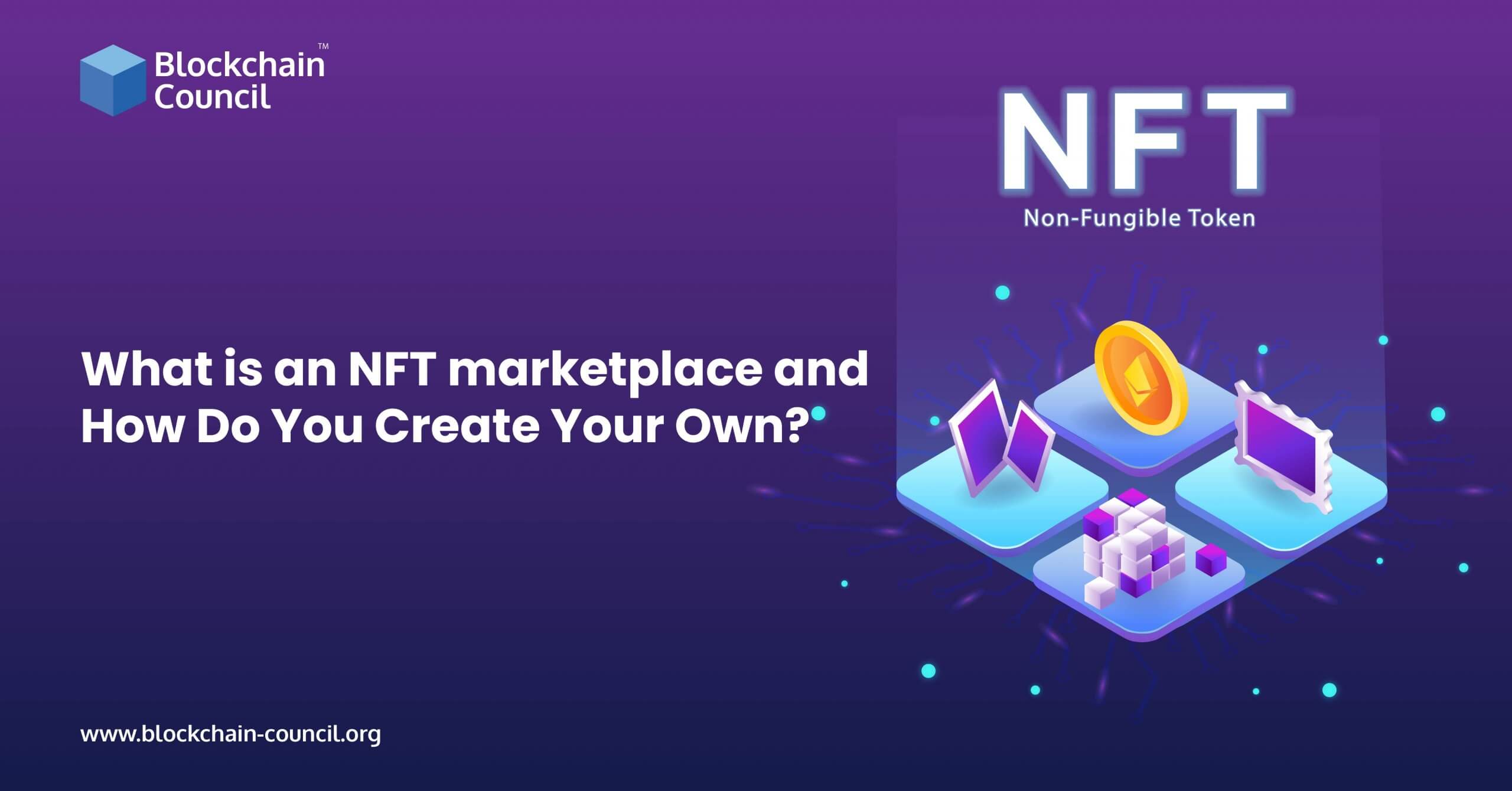
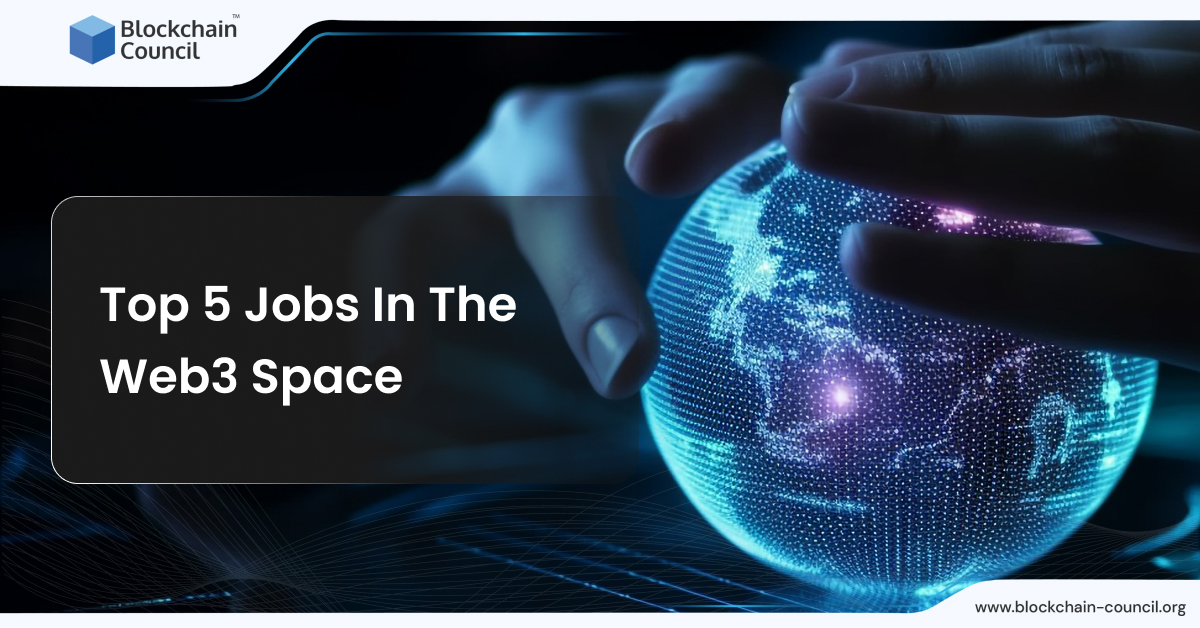
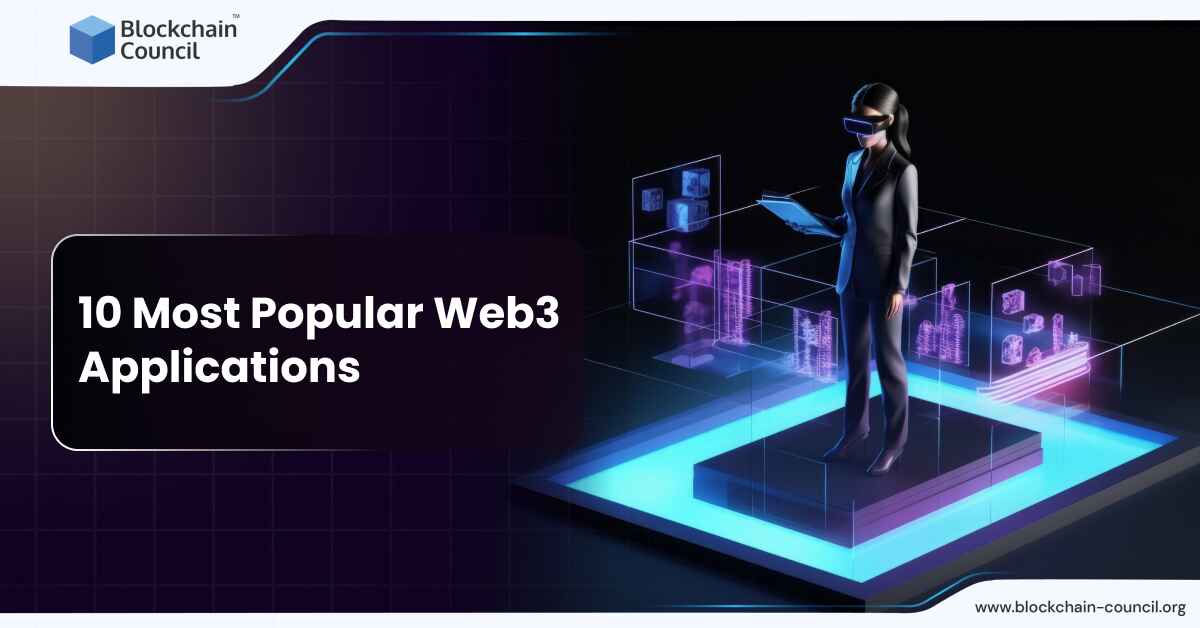
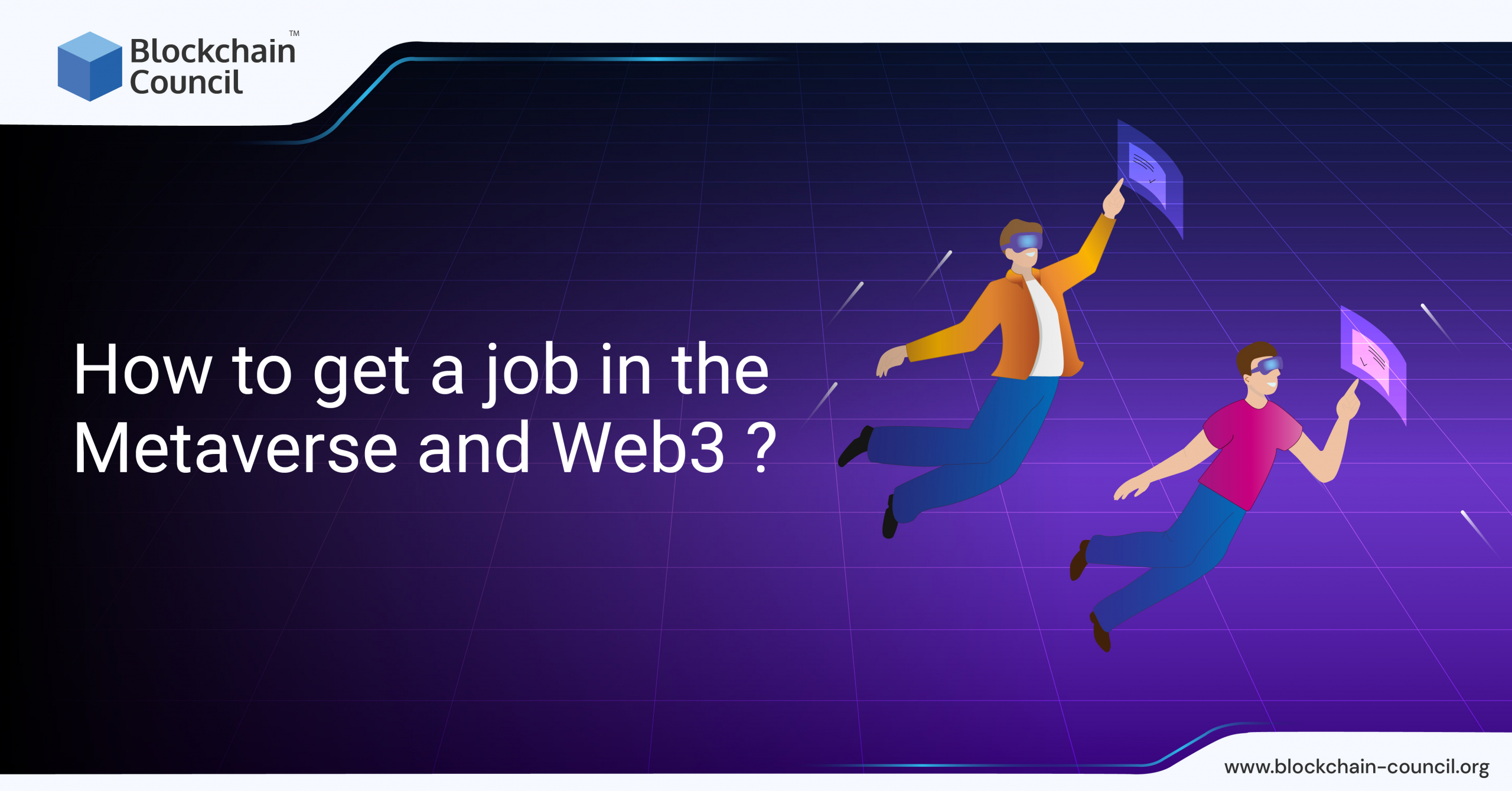
 Guides
Guides News
News Blockchain
Blockchain Cryptocurrency
& Digital Assets
Cryptocurrency
& Digital Assets Web3
Web3 Metaverse & NFTs
Metaverse & NFTs
